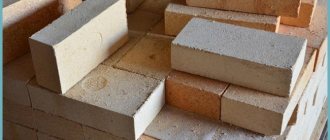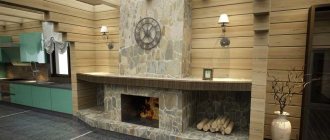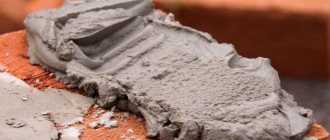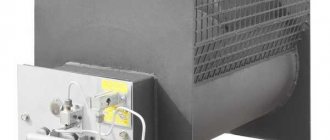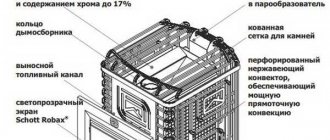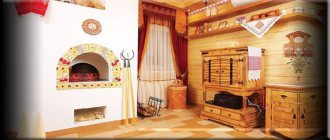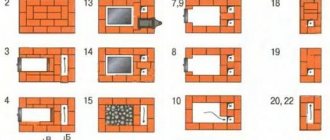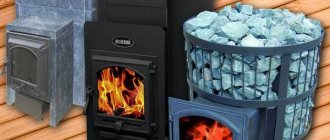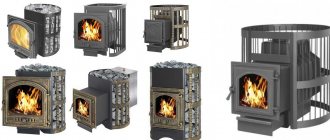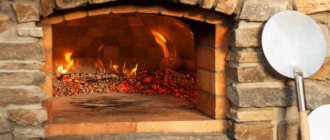What could be better than a good steam bath or sauna? Here you can fully relax, relax and forget about your problems. The central place in any steam room is occupied by a stove, and not a simple one, but one that meets the following requirements:
- fire safety;
- quick heating of the bath;
- efficiency;
- adjustable temperature;
- long service life;
- ease of use;
- correspondence between the size of the room and the dimensions of the device;
- health safety;
- aesthetics.
Bath heating devices come in several types: heater stoves, steam generators made of brick or metal alloys, and equipment with a fireplace. The latter are considered the most modern models. They can be purchased in specialized stores or made with your own hands.
Such designs will be of interest to those who like to sit near the fireplace after bathing procedures. The glass ceramic door is an important part of this unit. It gives a conventional heating device all the properties of a fireplace. Thanks to the fireproof glass door (we wrote about the characteristics of heat-resistant material earlier), you can watch the fire burning in the fireplace. Such units are quite popular and are in great demand.
For a steam room, a fireplace stove is a combination of practicality, functionality and economy. It provides the desired temperature and a lot of pleasant warming steam in the bathhouse and serves as a fireplace in the dressing room.
Materials from which sauna stoves are made
It is important that the device is able to provide the required amount of steam, generate enough heat and allow you to enjoy the sight of burning logs. Therefore, a durable fire-resistant material is selected for the manufacture of the firebox. Heat-resistant high-alloy steel has these properties.
Some people prefer to install brick fireplace stoves in the bathhouse. They are not sold ready-made, so they can be made to order or with your own hands. Compared to a steel oven, building a brick unit will take more time and effort. The result of the work will depend on how accurately the calculations were made and the brick was laid.
It is better to entrust the development of an engineering project to a professional or a specialized company, since a stove-fireplace for a bath is considered a rather complex system that requires care and precision during construction. For such structures it is necessary to build a reliable foundation.
Advantages of a brick kiln:
- Possibility to build units of any size and shape. There are different heating methods (water, air) and two types of firebox (open, closed).
- The design is perfect for a wooden steam room.
- The brick heats up quickly and cools down slowly, so the heat is retained in the room for a long time.
- Quiet operation.
If desired, you can improve the design of a brick wood-burning stove-fireplace. For example, if you make some changes, it can be used to cook food over charcoal.
Operational features of brick kilns
A brick stove is an effective heating system for a private house and bathhouse, which is built with one’s own hands. Such a device has low efficiency (does not exceed 75%) and an attractive appearance. To protect the portal, a heat-resistant glass shutter is used.
Brick fireplaces in the bathhouse are made to order or built by hand.
Heating devices for a bathhouse with a fireplace insert are complex functional systems that require professional development of a construction project and compliance with bricklaying technology. In addition, they require the construction of a foundation.
A brick fireplace stove has a number of advantages:
- a wide selection of different designs, with an open or closed firebox, as well as different heating system options (air or liquid);
- the wooden structure fits laconically into the interior of a private bath, helping to create a relaxing environment;
- heat-resistant brick has good performance characteristics: fast heating, slow cooling, resistance to destruction;
- low noise level when using the device.
Brick fireplaces for a bath can be used not only for heating, but also for cooking, adding some design changes.
Types of sauna stoves with fireplace
There are two ways to heat the unit:
- from the dressing room;
- from the steam room.
It is considered best to install the stove when the heater is facing the steam room, and the firebox is pulled out on the back side of the structure. It is believed that it is more convenient to place firewood in a remote device for burning fuel. This method allows you to install the unit simultaneously in the steam room and dressing room.
Certain models of metal stoves are equipped with a water tank , which is usually made of stainless steel and holds a minimum of 50 liters of liquid. The following installation methods are possible:
- remote;
- built-in;
- mounted
Two popular models of brick sauna stoves
Among the options for sauna stoves, the most popular are the Kurin and Kuznetsov models. What are their features and why these particular options are considered optimal for steam rooms and relaxation rooms.
screenshot_10.jpg
A special feature of the Kurina stove is its location in one of the adjacent walls in such a way that almost its entire volume is located in the steam room. Thanks to the ability to continuously add firewood, the heat in the bathhouse is maintained evenly, without temperature changes. The heater, fenced off from smoke and fire, prevents the ingress of carbon dioxide, and a metal box specially located above the firebox is an ideal place to place hot stones.
screenshot_2.jpg
Kuznetsov furnaces in all their variations are distinguished by a special movement of gases, which is ensured not by draft, but by their natural movement. A special chamber-hood collects hot gases and, pressed from below, cold gases are discharged into the chimney without the risk of entering the room. Choosing a Kuznetsov stove-fireplace for a bath provides a number of advantages:
- Uniform heating of all bricks, including the bottom row.
- Additional heating and heat retention in the walls due to the movement of gases.
- Minimal soot formation and infrequent chimney cleaning.
screenshot_12.jpg
Fuel types
It is necessary to pay attention to what flammable substance is used to fire the device. This affects both the price of the unit and its appearance. Depending on the energy source, bath heating devices are of the following types:
- Wood-burning . The wood burning stove is a classic. This type of fuel was used several centuries ago, and to this day timber products do not lose their relevance. This method of heating a bathhouse is quite functional, because the room warms up very quickly - within an hour. A wood stove consumes little energy, but provides heating for a room with an area of 4 to 50 m². The disadvantage of the unit is the need for constant cleaning of accumulated coal and ash.
- Gas. These are convenient and economical devices. They do not require constant fueling and cleaning, since their design provides automated control. This type of stove also allows you to enjoy a burning fireplace, creating the effect of a real flame. But it is not always possible to install such a device in a bathhouse, since it requires from 1.5 to 4.5 m² of gas per hour. It is difficult to provide such a volume without a central gas supply system. This is especially true for country houses and dachas. The stove can be powered by a gas cylinder, which is unsafe, so it is recommended to choose a different device model.
- Electrical. Such a stove is considered a relatively expensive pleasure. Electricity consumption due to the increased load is quite high - up to 5 kW/hour to heat the air in a room of 50 m². However, this type of oven has certain advantages: convenience and safety of operation. At the same time, for the correct functioning of the device, you will need reliable wiring and a separate electrical panel.
Is it possible and how to combine a stove and fireplace into one design?
Both the stove and the fireplace have their own special advantages. The former heat the room faster and use fuel more economically, the latter allow you to enjoy the beauty of a living flame and its warmth. Most rooms do not allow the installation of two heating devices at once. Therefore, the most common question on various forums is how to combine a stove and fireplace. There are two possible options, we will try to consider each of them in more detail.
Installation of finished equipment
The easiest option for combining these two types of heating devices is to purchase and install ready-made products, or if there is a need to build a stove combined with a fireplace. This is possible if space was left for it at an early stage of construction.
There are several design solutions for how to combine a fireplace and stove.
There are several advantages to this solution. The product is installed in a predetermined location and connected to the chimney as quickly as possible. The costs in this case are minimal.
Combining a fireplace and stove
The difficulty lies in the fact that the cross-sectional diameter of the channels in one and another type of equipment is different, so to carry out such work will require at least the installation of two smoke exhaust systems.
It is much easier to combine a fireplace and stove if they are metal. One option for such a connection is the possibility of finishing the equipment using refractory bricks. The stove and fireplace are built into this design.
Nuances associated with combining a fireplace and stove into one design
Fireplace and stove - what's the difference?
Is there a difference between how a room is heated using a fireplace and a stove? At first glance, it seems that if it exists, it is insignificant. In fact, beauty, as noted in one proverb, requires sacrifice, and in this case, their role is played by heat loss, which is associated with combustion in the fireplace.
The fact is that the heating of the room mainly occurs due to the heat that comes out of the combustion chamber. A large percentage of hot air simply goes outside. The design of the stove allows you to accumulate this heat and use it to warm the walls, which are the source of heating the room.
If you can combine the level of heating of the room that a conventional stove has with the beauty of natural cain, you can reduce the heat loss coefficient. Therefore, it is economically profitable to install a stove combined with a fireplace or install ready-made combined equipment. There are several other advantages of this design:
Combining a brick stove and a fireplace may be right not only because of aesthetic value, but also because of economic benefits. This solution also increases the efficiency of heating the house and makes it possible to use the fireplace as the main source of heating.
Source
Stones
So, when a stove for a sauna is chosen, it’s time to think about buying quality stones that produce thick steam. The most important requirement for the material is its zero radioactivity. You need to choose dense cobblestones with a uniform structure. When they heat up, the heat is distributed evenly, gradually entering the steam room.
It is unacceptable to use stones with chips and cracks. To test the strength of cobblestones, you need to hit them against each other: good dense material will not crack, and no defects will appear on its surface.
To ensure good air circulation, large stones are placed on the bottom, medium ones on top, and the smallest ones on top. It is better to buy them in specialized stores.
The following types of stones are considered the most popular:
- vulcanite;
- basalt;
- jade.
Bathhouse: washing design
The feeling of freshness will be created by the design of the sink in a beautiful natural style. Wildlife has a powerful calming effect. Therefore, in one case, the designers used large logs with untreated granite, in the other, they lined the inside of the wall with stone and tiles.
In such rooms, waterfalls from the walls and large shells instead of traditional faucets would be appropriate.
Fans of minimalism and new life for old things will love a shower made from a large garden watering can.
If there is no room for a pool, then you can cool down after the steam room in the plunge pool. Fortunately, it’s easy to make it with your own hands – from an ordinary barrel.
A washbasin made from a barrel will help you “maintain style”
. and furniture made from them is in the dressing room.
The floor may also be original. A cork covering with a straw pattern is suitable for a country-style interior. In addition to this flooring, you should take a bale of straw as a coffee table (an idea from the Hacienda show). Another interesting solution for the floor is a pattern made of boards and refractory bricks.
For an unusual bathhouse - the same doors - wooden, in the style of a country house. But these porthole windows will tell you how to use spare parts from an old washing machine.
Famous manufacturers
Termofor is one of the most popular stove manufacturers. To create products, the company uses components made in Switzerland. The assortment is represented by a wide selection of models, which allows each buyer to find a suitable option. There are open and closed heaters, devices with a heat exchanger or water heating tank. Almost every sauna stove-fireplace holds about 100 kg of stones.
brand units are quite common
. The stoves of this manufacturer have a characteristic feature: the steam room reaches a comfortable temperature in a short time due to the presence of several independent channels for fuel combustion. Moreover, this stove has a long service life, and it can be serviced even while in the dressing room.
Metal model
Basically, two types of stoves are used in Russian steam rooms: steel and brick.
The simplest model is made from steel pipes or metal barrels with thick walls. For work you will also need a grinder and a welding machine. Read also: self-installation of an iron stove in a bathhouse.
Design and material selection
At the very beginning, you need to decide what features the design will have. Therefore, it is worth drawing a drawing or using the Internet and choosing the appropriate option. The main thing is to correctly calculate the power of the furnace, which should be equal to exactly half the volume of the firebox. If you plan to install homemade stoves in a bathhouse, then it is better to increase the power with a reserve.
It is also necessary to prepare the material in advance; mainly steel pipes are used for the manufacture of blanks, the thickness of which is 8-10 mm and the length is 1.5 meters. In addition, you will need sheet metal, as well as gratings. For the sashes you will need to purchase several hinges, a latch and an ash drawer. As a rule, all these parts are cheap, so a home-made stove for a bathhouse will not be too expensive.
Assembly of the structure
If all materials and tools are prepared, then you can start working.
At the very beginning you need to draw a drawing
The process of making a homemade sauna stove is as follows:
- It is necessary to take a piece of steel pipe (1.5 m) and cut it into two parts, this must be done in such a way that one is approximately 90 cm long, the other about 60 cm. Moreover, the longer one will be used to create a blank for firebox, and a short one to the water heating tank.
- First, you need to process a 90 cm scrap. To do this, you need to cut a groove in the lower part, the height of which should be 50 mm and the width about 25 cm. This hole will be used as a blower, which will provide the firebox with oxygen.
- Now above this groove it is necessary to weld a thick steel plate on which the grate is fixed. This can be done using a welding machine. This structure will serve as the bottom of the firebox.
- At this stage, a combustion hole is made in the pipe, and on one edge it is necessary to weld hinges and hang a flap on them, which can also be made from a sheet of steel, but first bend it along the radius of the pipe.
- Then they begin to make a heater - a special container that will contain pebbles, stones and cobblestones. To do this, you can use a piece of iron pipe or a box that is welded from reinforcement.
- Now it’s time to start assembling the water heating tank. To do this, you need to take a short pipe and weld the bottom to the bottom, moreover, there should be a hole in it for the chimney. And a tap is welded to the side of the pipe.
- All that remains is to make a lid, but such that the container is covered only by a third. In this case, you can always add water to the tank without fear of getting burned.
More details in this video:
At the very end, the heating tank is welded to the firebox to make the connection more durable, and steel strips are fixed around the perimeter. Then you need to pass the chimney through the tank and weld it to the bottom, and do this as tightly as possible. A homemade sauna stove is considered ready.
